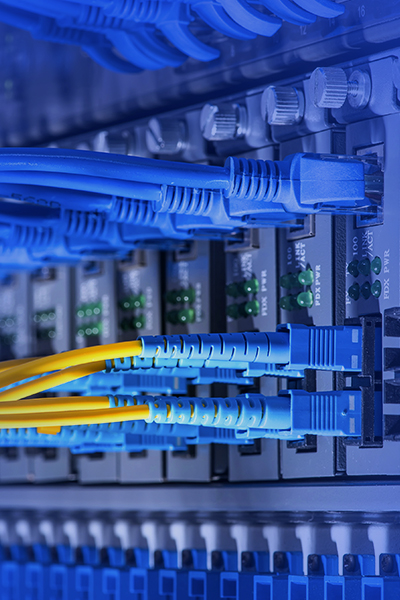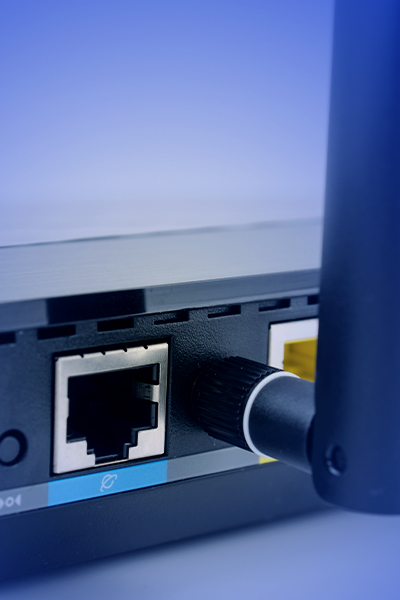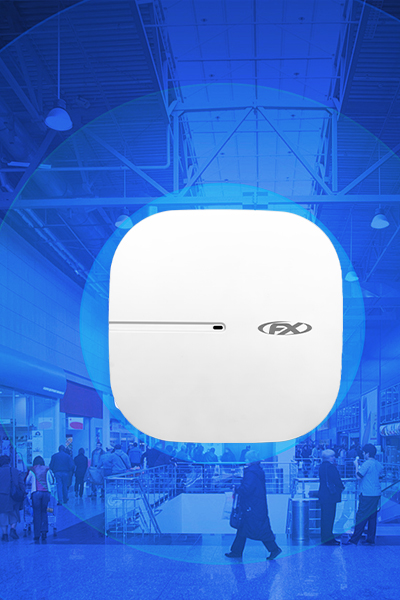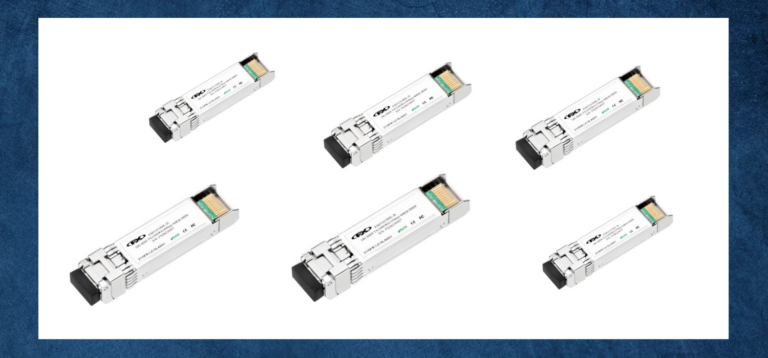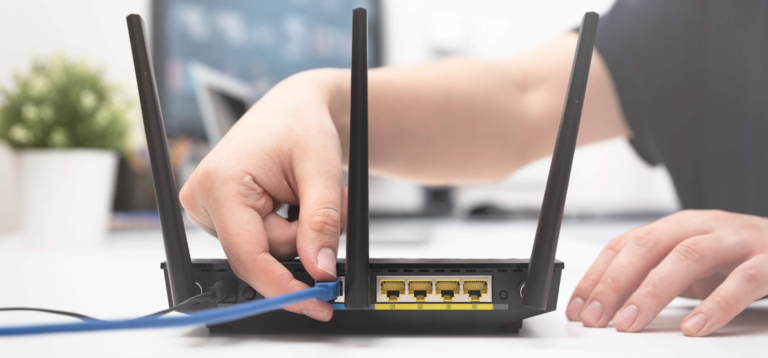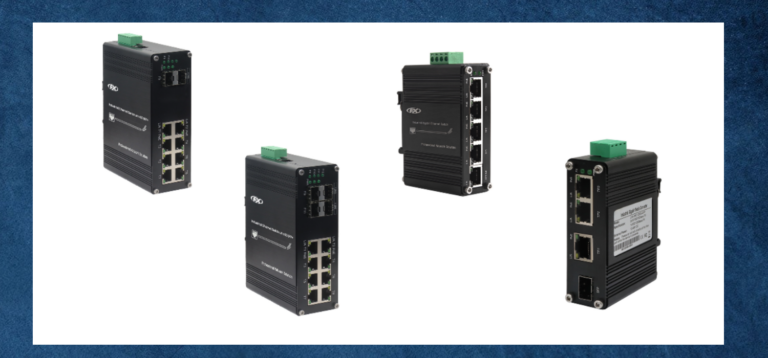Looking to understand a PON Network Router but feeling overwhelmed by the technical jargon? Don’t worry, we’re here to help you!
This beginner's guide will deconstruct the complex world of PON Network Routers into simple and engaging terms - from knowing what it is to how it functions. Let’s go!
What is PON (Passive Optical Network)?
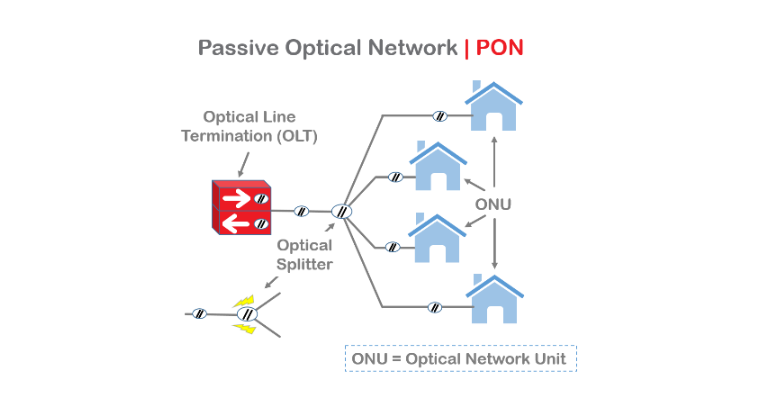
Passive Optical Network (PON) is a telecommunications technology that uses fiber optic cables and passive splitters to provide high-speed broadband connectivity to end consumers, both domestically and commercially.
What does PON mean on a router?
PON is an abbreviation for Passive Optical Network. It's a key technology that propels high-speed internet to homes and businesses.
When implemented in routers, PON allows broadband connectivity through optical fiber cables directly from the Internet Service Providers (ISPs).
This point-to-multipoint network architecture significantly reduces the need for individual connections and improves network efficiency.
PON in a router is important as it enhances internet speed while offering reliable services to every end-user connection.
What is PON and Ethernet?
PON is a data transmission system that uses optical fiber cables. This allows high broadband speeds and fiber connectivity directly to the user's doorstep.
On the other hand, Ethernet primarily refers to a computer network technology recognized as the first to connect devices via LAN or Wide Area Networks (WANs).
Ethernet employs PON using fiber optic cabling to provide Ethernet service from a main data center or source to various endpoints.
What is the Purpose of the PON?
The primary purpose of the PON is to facilitate efficient data transmission over long distances. It accomplishes this through point-to-multipoint communication in fiber broadband networks, linking a single source to multiple endpoints.
PON enhances connectivity between Internet Service Providers and consumers, providing faster and more reliable Internet access, voice communication, and video streaming services.
A distinguishing feature of PON technology is its lack of active components, which helps reduce both costs and energy consumption.
Furthermore, it offers flexibility in bandwidth allocation based on user requirements, making it an adaptable solution for varied consumer needs.
What are the Main Benefits of PON?
Firstly, PON provides economic savings by reducing infrastructure and material expenses, making it a cost-effective solution.
Secondly, PON delivers fast connectivity, allowing for speedy internet access and consistent performance.
Additionally, PON is known for its dependability in terms of reliable data transmission and optimal resource utilization.
What is a PON Network Router?

A PON network router is a key component of a PON system. These networks use point-to-multipoint topology and optical splitters to transmit data from one source to multiple endpoints efficiently.
A PON network router is important in managing data flow between the Optical Line Terminal (OLT) and the Optical Network Units (ONUS).
Its main function is to ensure a smooth and efficient broadband connection for end users by coordinating data transmission.
Key Components of PON Network Router
Optical Line Terminal (OLT)
The OLT manages the PON network and transmits data to the optical network units (ONUs). It serves as the central hub for data transmission.
Optical Network Units (ONUs)
Located at the end users' premises, the ONUs receive data from the OLT and process it for distribution. Each ONU serves as an endpoint in the PON network, allowing multiple users to access the network simultaneously.
Fiber Optic Splitters
These unpowered splitters divide the incoming optical signal from the OLT into multiple downstream signals, enabling point-to-multipoint communication. Splitting the signal allows data to be sent to multiple ONUs simultaneously without degrading performance.
Network Management
This component ensures the proper functioning of the PON network router by monitoring and controlling various network operations. It includes fault detection, performance monitoring, and configuration management functions.
Data Transmission
The PON network router facilitates high-speed data transmission through fiber-optic cables. This enables faster and more reliable communication between devices connected to the network.
Functions of PON Network Routers
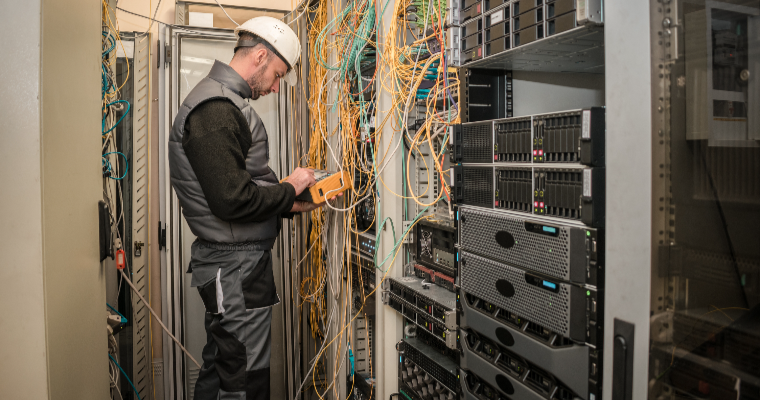
Optical Network Terminal (ONT)
ONT converts fiber optic signals into data that can be used by the end user, acting as a communication interface between the user's equipment and the service provider's network.
The ONT receives optical signals from the OLT and converts them into electrical signals. These signals are then delivered to the user's equipment through Ethernet or other connectivity options, such as a router or computer.
In addition, it is responsible for managing the connection between the user's equipment and the service provider's network.
Subscriber Management
PON networks utilize subscriber management to connect users with their ISPs efficiently. Subscriber management entails managing and maintaining connections between subscribers and the ISP.
It allows for effective broadband internet access for a large number of subscribers. With subscriber management, up to 32 ONUs can be connected to a single OLT, ensuring smooth connectivity for all users.
Quality of Service (QoS)
QoS is important when it comes to designing PON network routers. Service providers play a key role in implementing and constantly measuring QoS to meet the needs of their clients.
In PON networks, QoS is measured based on factors such as delay, bandwidth, and packet loss rate. To ensure proper QoS provisioning in these networks, traffic priority classes are distinguished in each ONU/ONT according to the service level agreement (SLA).
This allows for effective traffic management, bandwidth allocation, packet prioritization, congestion control, and packet loss mitigation.
Security
PON network routers employ encryption protocols to protect your data privacy, keeping it safe from unauthorized access.
These routers also authenticate and authorize user access, ensuring only authorized users can connect to your network. PON network routers implement firewall technology to further enhance security, safeguarding against potential threats and attacks.
Regular updates and patches to the router's firmware are necessary to address any security vulnerabilities that may arise. Proper configuration and management of these routers are essential for maintaining a secure network environment.
Features of PON Network Routers
Routing and IP Address Assignment
In computer networking, routing tables store source and destination IP addresses. Routers use routing protocols to communicate with each other about the networks they manage.
Each interface on a router is assigned an IP address and MAC address. Understanding the components of a PON network, such as the OLT, ONU, ONT, and ODN, is essential for proper IP address assignment.
Routing refers to the process where a router determines the best path for data packets to reach their destination.
Network Address Translation (NAT)
NAT enables private IP networks to connect to the internet. It translates private IP addresses into public IP addresses, allowing multiple devices within a local network to share a single public IP address for internet access.
This is especially useful when there are limited public IP addresses available. NAT routers use an address translation table to map non-routable IP addresses and port numbers, ensuring seamless communication between the private network and the internet.
Firewall Capabilities
These capabilities include access control, intrusion prevention, traffic filtering, rule-based filtering, and network protection.
With the ability to prevent unauthorized access and inspect incoming and outgoing traffic using predefined rules, PON network routers ensure reliable and secure connections.
Additionally, these routers offer features such as unauthorized access prevention, traffic inspection, malware detection, and network defense.
Wi-Fi Integration
With this capability, PON routers can seamlessly connect with wireless and mobile networks, providing uninterrupted connectivity.
By incorporating Wi-Fi technology, users can enjoy the benefits of wireless connection with their PON network router.
This enables them to effortlessly connect multiple devices to the network without any hassle of wires or cables.
Selecting the Right PON Network Router
Speed and Capacity
GPON technology can support speeds of up to 2.5Gbps, ensuring fast data transmission for multiple users simultaneously.
On the other hand, XGS-PON takes it a step further by supporting speeds of up to 10Gbps, paving the way for even faster internet connections.
With these high-speed options, you can enjoy seamless streaming, gaming, and downloading experiences without lag or buffering issues.
Additionally, PON network routers offer impressive internet capacity because they use fiber optic cables that provide ample bandwidth for all your online activities.
Compatibility with PON Standards
It's important to ensure compatibility with the latest PON standards to select the right PON network router.
This includes GPON (Gigabit PON) and NG-PON2 (Next-Generation PON2). GPON technology, widely used today, supports data rates of up to 2.5 Gbps.
For even higher speeds, consider XG-PON and XGS PON, the latest 10G PON standards offering data rates of up to 10 Gbps.
Looking further into the future, NG-PON2 is a future-proof standard that supports multiple wavelengths and can deliver impressive data rates of up to 40 Gbps.
Security Feature
Selecting a router with strong security features is important to protect against unauthorized access and potential threats.
Look for routers that offer access control, data encryption, firewall protection, and network authentication. These features help safeguard sensitive information, prevent malware attacks, and ensure secure data transmission.
Regular firmware updates also provide vulnerability patches to address known security risks. By choosing a PON network router with strong security features, you can have peace of mind knowing that your network is well-protected.
Brand and Manufacturer
When selecting the right PON network router, consider trusted brands that offer a range of features such as fast speeds, strong security measures, and seamless integration with existing infrastructure.
Price Range
For most users, a router in the $100 to $200 range will be sufficient. However, if you're specifically looking for a gaming router, more affordable options are available with prices as low as $50.
So whether you're on a tight budget or looking for the best value, cost-effective router options are available to meet your specific requirements.
Popular PON Network Router Brands
Huawei
Huawei is a global leader in the telecommunications equipment industry, including PON solutions like OLTs and ONTs.
Nokia
Nokia offers a range of PON equipment, including OLTs, ONTs, and related solutions for broadband access networks.
ZTE
ZTE is another major player in the telecommunications sector, providing PON equipment and solutions for high-speed fiber-optic networks.
FiberHome
FiberHome is a Chinese telecommunications equipment provider that specializes in PON technology, offering OLTs and ONTs for various PON standards.
Calix
Calix is a prominent North American company known for its broadband access solutions, including PON equipment and software.
ADTRAN
ADTRAN is a reputable networking equipment manufacturer that offers PON solutions and is known for its focus on broadband access technologies.
Alcatel-Lucent (now Nokia)
Alcatel-Lucent, now part of Nokia, has a history of providing PON equipment and solutions for high-speed access networks.
Cisco
Cisco, a well-known networking company, has also ventured into the PON space with equipment designed for fiber-optic access networks.
Dasan Zhone
Dasan Zhone offers a variety of PON equipment, including OLTs and ONTs, for broadband and fiber-optic deployments.
HFR Networks
HFR Networks specializes in optical transport solutions, including PON technologies, to enhance broadband access.
Common Uses of PON Network Routers

Internet Access
PON network routers are commonly used to provide high-speed internet access to residential and business users. They enable broadband connectivity over fiber-optic lines.
Voice Services
PON networks can support Voice over IP (VoIP) services, allowing for voice communication alongside data transmission. PON routers can manage these services.
Video Streaming
PON routers facilitate the delivery of video streaming services, including IPTV (Internet Protocol Television), allowing users to watch TV over their PON-based internet connections.
Data Services
PON networks handle various data services, such as email, web browsing, cloud storage, and file downloads, which are managed by PON network routers.
Home Networking
PON routers often include features like Wi-Fi, enabling users to create local home networks and connect multiple devices wirelessly.
Business Connectivity
PON networks are used by businesses for high-speed internet access, VPN (Virtual Private Network) connections, and other networking needs.
Benefits of Using a PON Network Router
High-Speed Connectivity
PON routers enable ultra-fast broadband access with symmetrical or asymmetrical speeds, depending on the PON standard used.
Scalability
PON networks are easily scalable, allowing service providers to add more users without significant infrastructure upgrades.
Reliability
Fiber-optic connections provided by PON networks are highly reliable and less susceptible to interference or signal loss over long distances.
Cost-Efficiency
PON technology is cost-effective for service providers because it allows them to serve multiple users with a single fiber strand.
High Bandwidth
PON networks offer high bandwidth, making them suitable for bandwidth-intensive applications like 4K video streaming and online gaming.
Limitations of Using a PON Network Router
Coverage Area
PON networks require substantial infrastructure deployment, which may limit availability to densely populated areas or urban regions.
Initial Installation Costs
The installation of PON networks, including fiber cabling and network equipment, can be expensive, which may affect service pricing.
Shared Bandwidth
PON networks use shared bandwidth, so the actual speed experienced by users may decrease during peak usage times when many subscribers are active.
Distance Limitations
PON networks have distance limitations between the OLT and ONT, typically up to 20-30 kilometers. Beyond this range, signal degradation occurs.
Dependency on Power
PON network routers and ONTs require electricity, so power outages can disrupt service unless backup power solutions are in place.
Limited Service Provider Choices
PON networks may be provided by a single service provider in some areas, limiting user choice.
PON Router vs. Traditional Router
| Aspect | PON Router | Traditional Router |
| Technology | PON routers utilize passive optical network technology, delivering broadband network access to end-users via fiber optic lines. | Traditional routers use Ethernet, DSL or cable connections for data transmission. |
| Speed | PON routers generally offer high-speed, symmetrical bandwidth, facilitating both upstream and downstream data flow at high rates. | While traditional routers can offer high-speed connections, the speed often depends on the type of connection (DSL, Cable, etc.) and may not provide symmetrical bandwidth. |
| Topology | PON routers use a point-to-multipoint topology, allowing a single optical fiber to serve multiple endpoints through optical splitters. | Depending on the network design, traditional routers primarily operate in point-to-multipoint topology. |
| Cost | PON routers often involve lower capital and operating costs due to using passive, unpowered network elements and fewer router/switch ports. | Traditional routers may require more investment in cabling, powered network elements, and regular maintenance. |
| Distance covered | PON routers can cover up to 20 kilometers long distances without signal boosting or repeats. | The coverage distance of traditional routers is typically limited and may require repeaters for longer runs. |
PON Network Router vs. Cable/DSL Modems
| PON Network Router | Cable/DSL Modems | |
| Definition | A device that provides a broadband connection using point-to-multipoint topology and passive fiber optic splitters. | A device that enables your computer to communicate with an internet service provider over a landline connection. |
| Technology | PON technology utilizes only a single optical fiber and passive splitters, thus providing more efficient data transmission. | Cable modems use coaxial cable to connect your computer to the internet, while DSL modems use your telephone line without disrupting your telephone use. |
| Speed and Capacity | A single fiber from a service provider can serve multiple users in a PON system. | Cable modems generally offer faster speeds than DSL, but the speed can decrease if multiple users access the service simultaneously. |
| Security | PON network router has an inherent security feature due to the inherent nature of the fiber optic system. | Both Cable and DSL modems come with built-in firewalls but might require additional security measures. |
| Usage | PON network routers are commonly used in fiber broadband networks. | Cable modems are commonly used in residential settings, while DSL modems are used in both residential and commercial settings. |
| Considerations | PON technology can be more costly to establish initially. | Cable/DSL modems are subject to service availability in the area. |
Conclusion
A PON Network Router is a device in fiber-optic networks that connects your home or business to high-speed internet.
It manages the data flow, keeps your network secure, and ensures a good online experience. It's called "passive" because it doesn't need extra electronics between you and the internet.
Connect with us today
let's shape a future of boundless connectivity and extraordinary possibilities. Experience the power of true networking solutions with FlyXing.
Connect with us today!
let's shape a future of boundless connectivity and extraordinary possibilities. Experience the power of true networking solutions with FlyXing.
